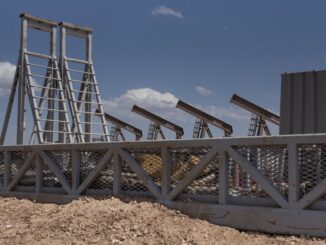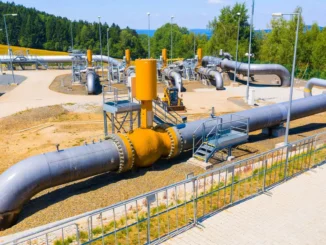
U.S. marketed natural gas production remained relatively flat in 2024, growing by less than 0.4 billion cubic feet per day (Bcf/d) compared with 2023 to average 113 Bcf/d, according to our latest Natural Gas Monthly. Production growth in the Permian was offset by declining production in the Haynesville and relatively flat production in Appalachia.
EIA’s Short-Term Energy Outlook breaks out U.S. Lower 48 (L48) marketed natural gas production data for the Appalachia, Bakken, Eagle Ford, Haynesville, and Permian regions and also includes Alaska and Gulf of America production data. The Appalachia, Permian, and Haynesville regions produce the most, accounting for around two-thirds of total U.S. natural gas production combined.
Note: GOA=Gulf of America, AK=Alaska; L48=Lower 48 U.S. states
In 2024, more natural gas was produced in the Appalachia region of the Northeast than in any other U.S. region, accounting for 31%, or 35.6 Bcf/d, of marketed natural gas production. Production growth in the Appalachia region has been slowing in recent years because of limited pipeline takeaway capacity to transport natural gas to demand markets. In 2024, Appalachian production rose slightly by 0.1% (0.50 million cubic feet per day) and in 2023 Appalachian production grew by 0.9 Bcf/d. Historically low Henry Hub prices contributed to the muted growth in Appalachia in 2024. The Henry Hub spot price averaged $2.21 per million British thermal units (MMBtu) in 2024, the lowest average annual Henry Hub price ever reported and 16% lower than the 2023 annual average.
The Permian region in Texas and New Mexico accounted for 22% of the marketed natural gas production in the United States in 2024 and accounted for almost all the growth in U.S. production. In 2024, marketed natural gas production in the Permian rose by 12%, or 2.7 Bcf/d, to average 25.4 Bcf/d.
In the Permian region, growth in natural gas production is primarily the result of associated gas produced during oil production. West Texas Intermediate (WTI) crude oil prices averaged $77/b in 2024, high enough to support oil-directed drilling in the Permian region. The average breakeven price for new wells ranged between $62 per barrel (b) and $64/b in the Permian Midland Basin and the Permian Delaware Basin, two of the largest basins in the Permian, according to data from a Dallas Fed Energy survey.
In 2024, production in the Haynesville region, which spans Louisiana and Texas, averaged 14.6 Bcf/d, 11% less than the 2023 annual average. Natural gas production in the Haynesville declined last year as producers decreased drilling activity because of historically low natural gas prices. Producers averaged 37 active rigs per month in the Haynesville in 2024, compared with 57 active rigs in 2023. The higher relative cost to produce natural gas in the Haynesville region played a role in reducing rig activity and in the decline in average annual production in 2024 compared with 2023.
Natural gas production costs depend on many factors, including the cost of drilling wells. The Haynesville formation is between 10,500 feet to 13,500 feet deep, which is much deeper than other formations. By comparison, wells in the Marcellus in the Appalachia region are on average 4,000 feet to 8,500 feet deep. Because drilling deeper wells in the Haynesville is more expensive than drilling wells in the Marcellus and other shale plays, natural gas prices have to be relatively higher to make drilling economical.
Principal contributor: Naser Ameen
We give you energy news and help invest in energy projects too, click here to learn more








